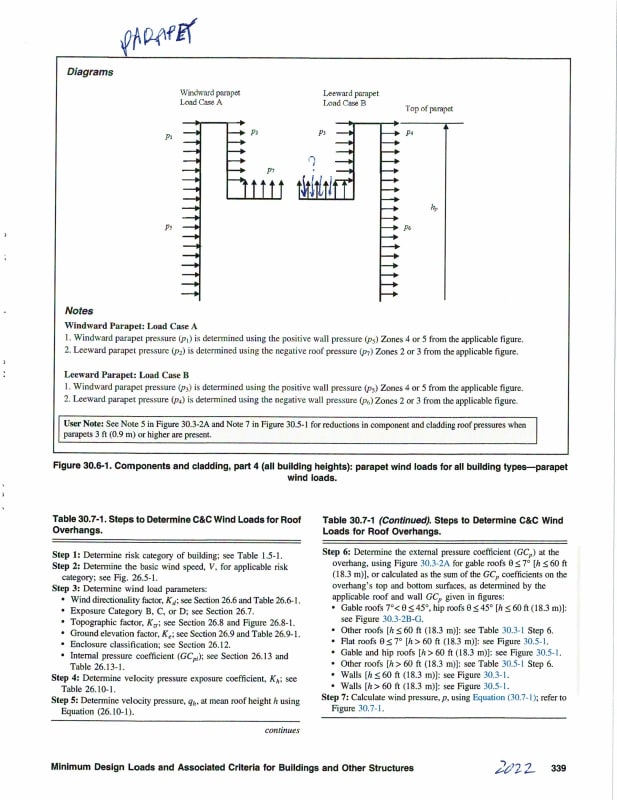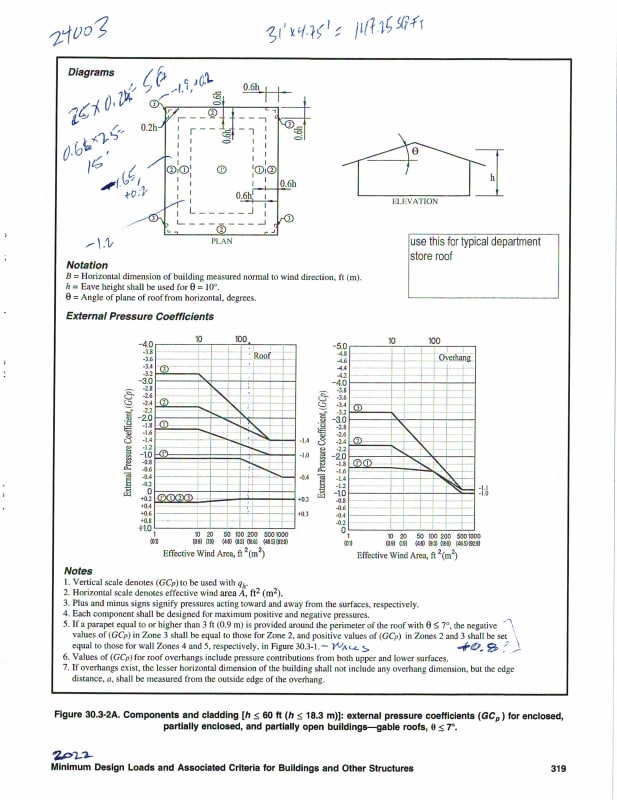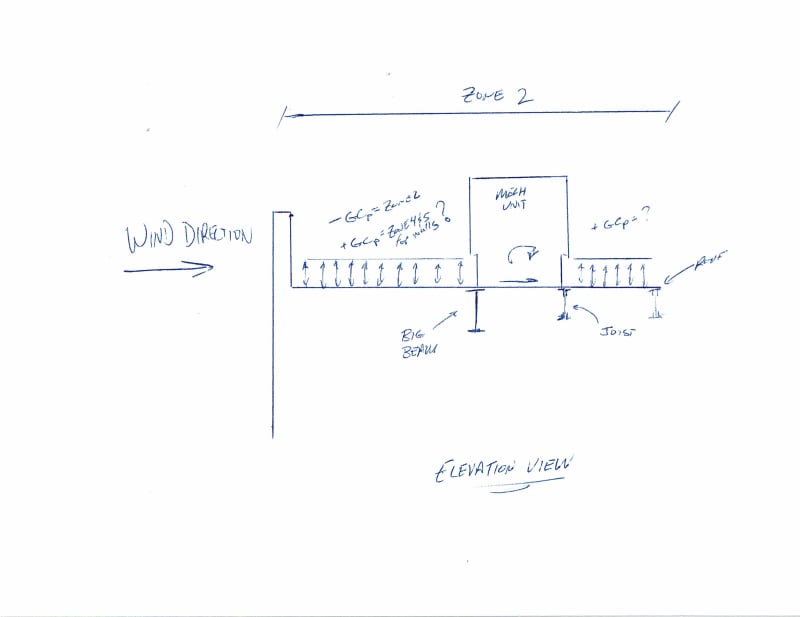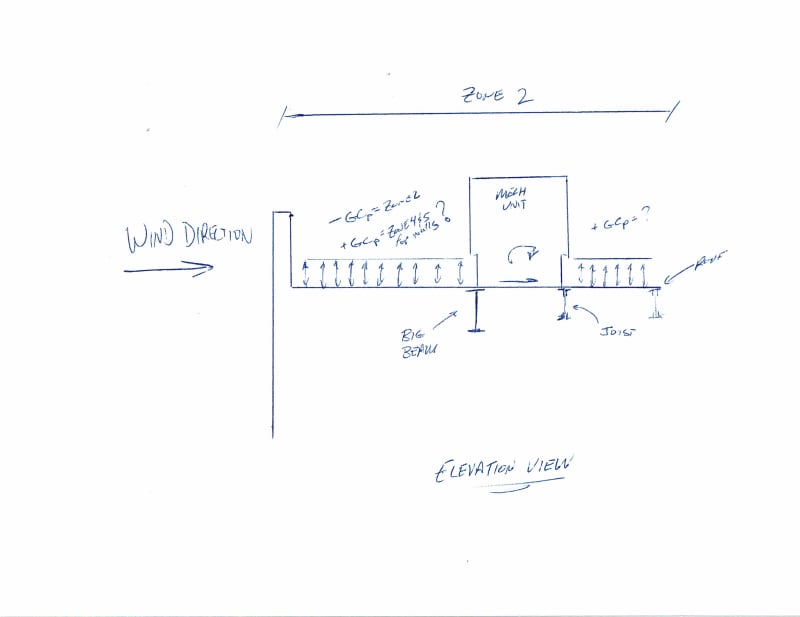I am looking at the addition of a mechanical unit on a steel joist roof. The unit is resting on a steel beam on one long side of the unit and a joist on the other. ASCE7-22, Figure 30.3-2A, note 5 states there are different pressures near the parapets (see attached). The positive (downward) values are x~4. Is there a wind direction factor to this positive pressure? I.e. would the pressure on the "windward" parapet be negative in the roof zone and the "leeward" parapet see the positive - similar to Figure 30.6-1 (although roof pressure is shown as negative in the diagram for leeward, see attached)?
The way the numbers work out, and the positioning of the unit, beam, and joist if the positive roof pressure is only on the leeward side then joist reinforcements are not needed.
I was not able to find clarification in the commentary.
[URL unfurl="true"]https://res.cloudinary.com/engineering-com/image/upload/v1709931652/tips/CCF_000065_g9tagy.pdf[/url]



The way the numbers work out, and the positioning of the unit, beam, and joist if the positive roof pressure is only on the leeward side then joist reinforcements are not needed.
I was not able to find clarification in the commentary.
[URL unfurl="true"]https://res.cloudinary.com/engineering-com/image/upload/v1709931652/tips/CCF_000065_g9tagy.pdf[/url]




